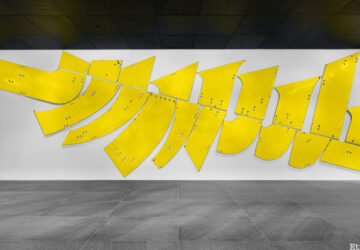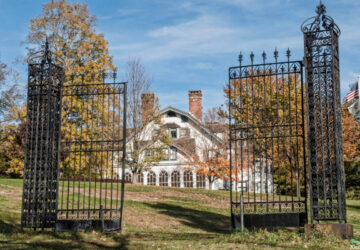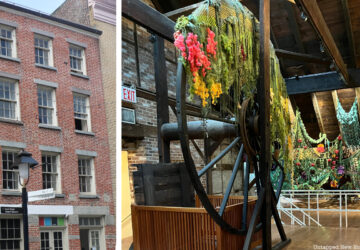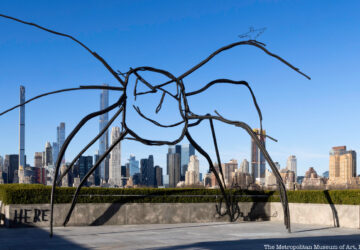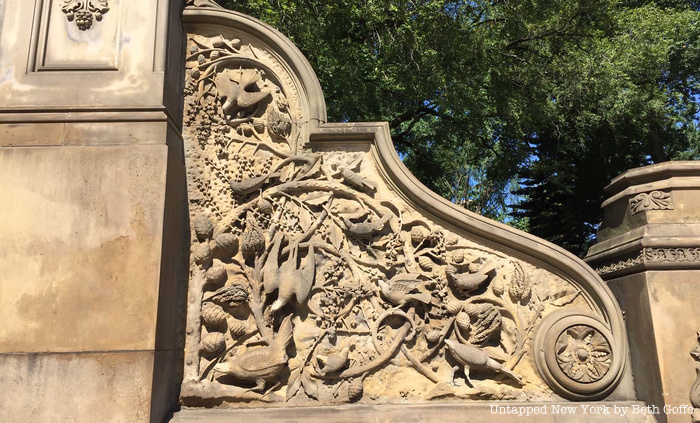5. Bethesda Terrace Carvings and Fountain Base
Bethesda Terrace and its fountain are perhaps the most recognizable icons of Central Park, and Mould helped design each of them. The terrace was one of the first structures built in the park. Considered Vaux’s masterpiece, work began on the terrace in 1859. Vaux wanted the carvings which adorn the terrace to have a wildlife and seasonal motif. Mould brought Vaux’s concepts a reality through his relief carving designs. Walking around the terrace, you see beautifully intricate carvings of vines and leaves weaving around birds in flight, niches filled with tiny sculptures of woodland creatures, and ornamental designs made of flowers and fruit.
Inside the terrace gallery, Mould designed the colorful patterns found on the tilework. The Minton Tile company in England created the tiles based on Mould’s designs. There are more than 15,000 of them! It is the only place in the world where you will see Minton tiles, a popular floor tile in the 19th-century, on the ceiling.
Bethesda Fountain, formally titled Angel of the Waters, was the only sculpture commissioned during the original design of Central Park. Sculptor Emma Stebbins created the twenty-six feet high fountain. Stebbins was the first woman to receive a commission for a major public work in New York City. Vaux designed the base it stands on, and Mould created the ornamentation, including four cherubs representing Temperance, Purity, Health, and Peace.
